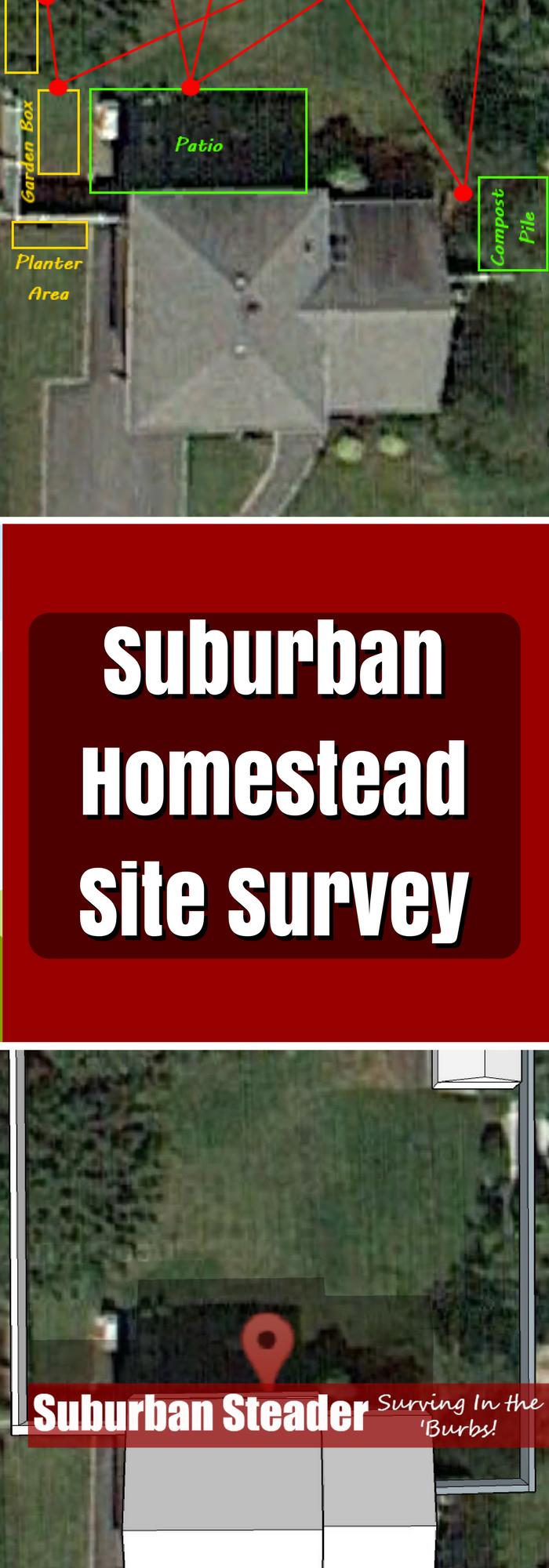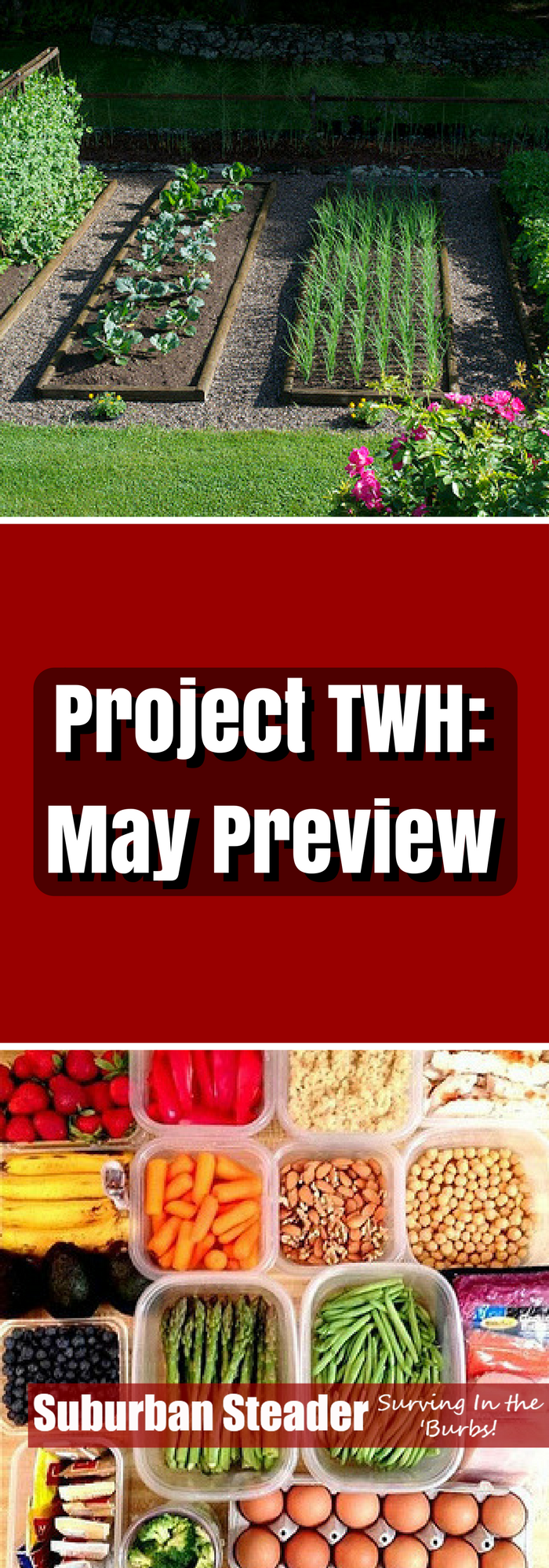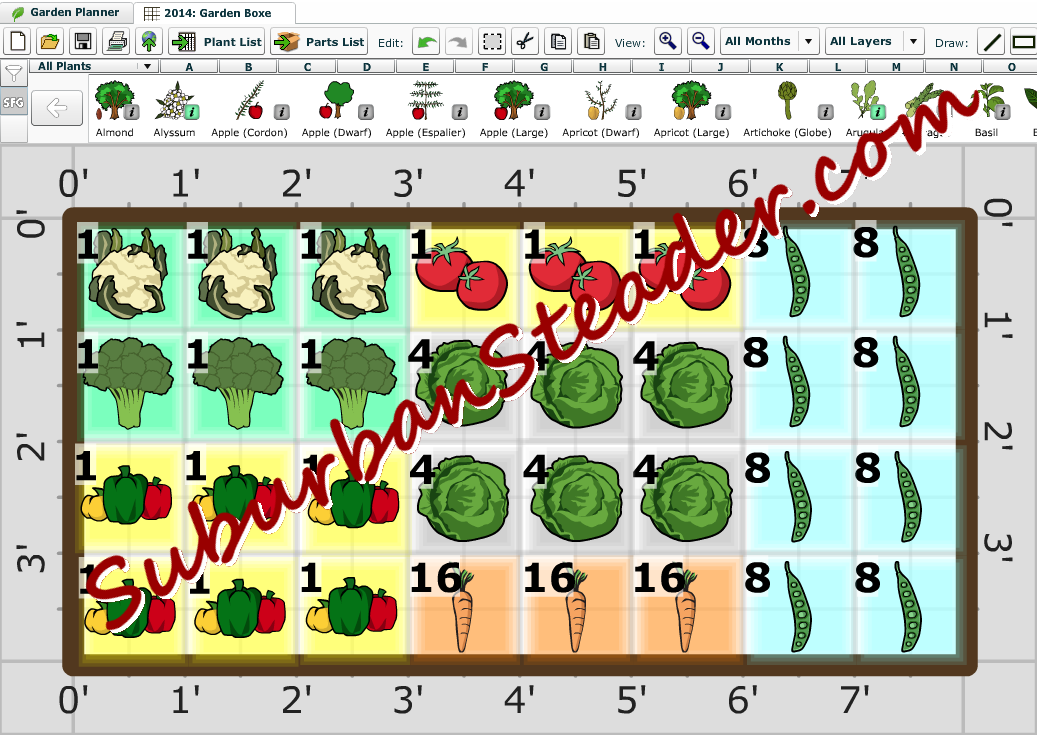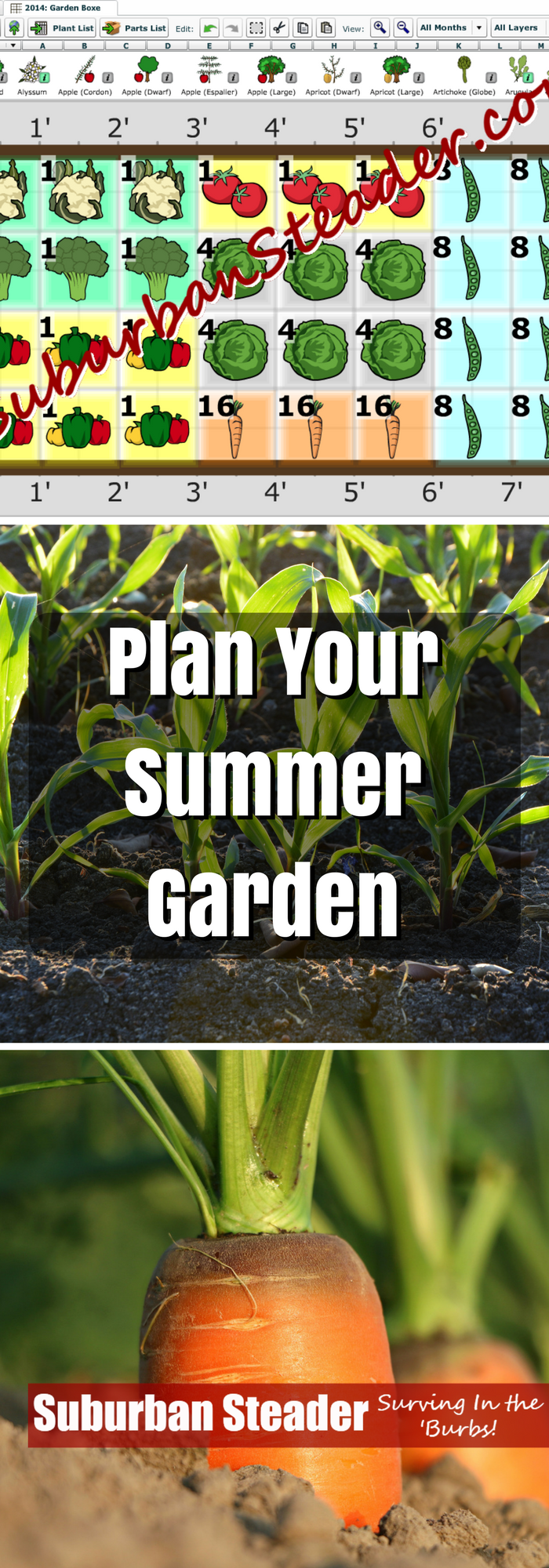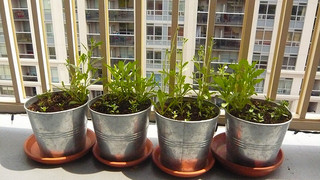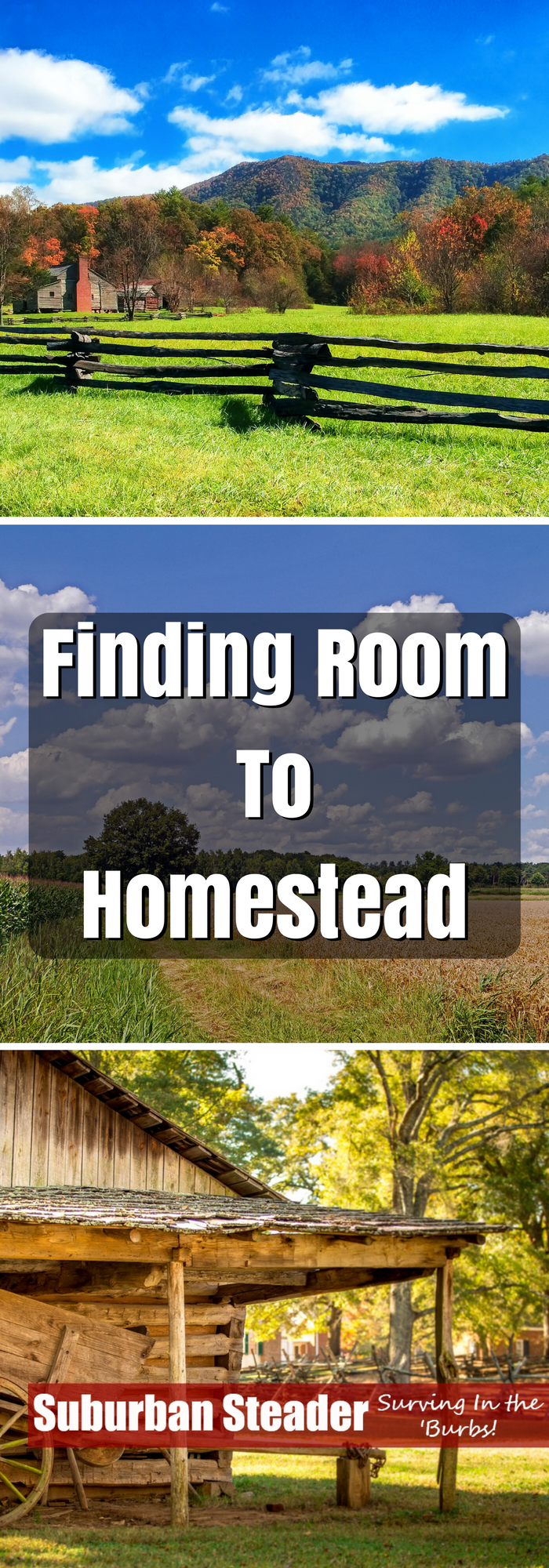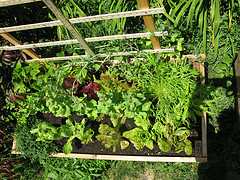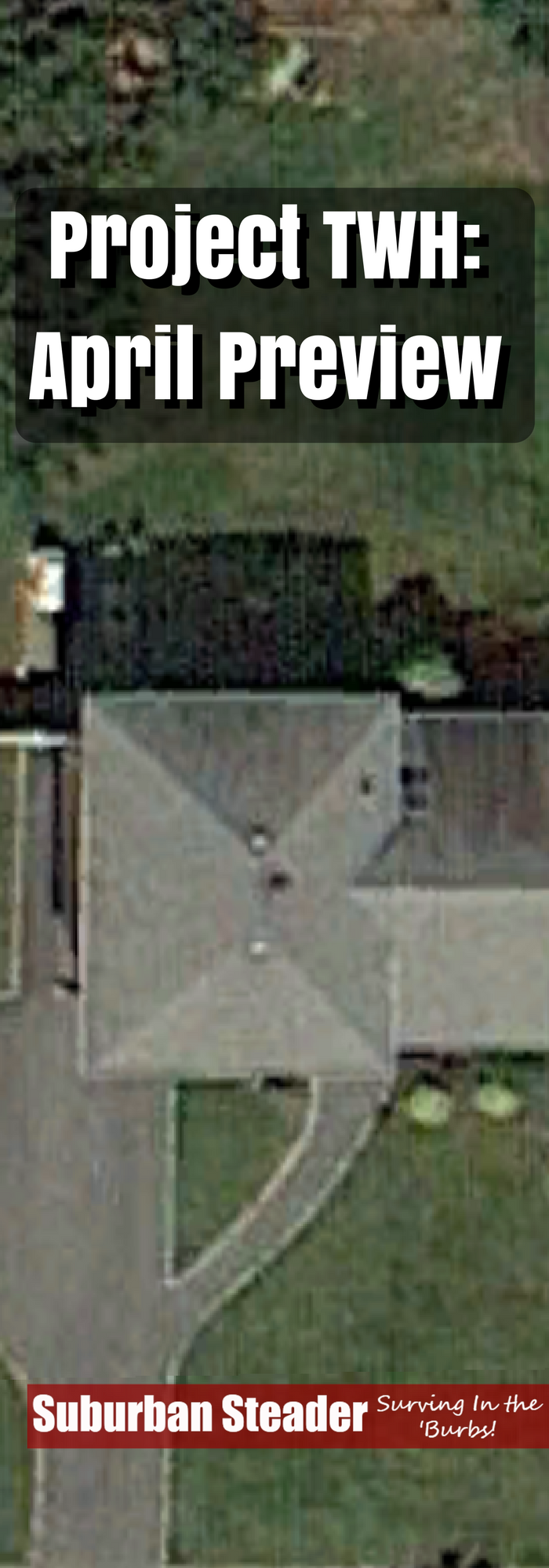In the last post, I talked about how to find room to set up your suburban homestead. Now that you’ve found a place to start your suburban homesteading activities, it’s time to perform a homestead site survey.
Performing a homestead site survey, especially on a suburban homestead, will enable you to figure out HOW you’re going to homestead. Where are you going to plant items? Where do you have constant sun? Constant shade? Is the soil better in one area than another? All these issues will be addressed in this post.
As always, we’ll use The Weekend Homesteader as a guide and we’ll correlate all our instructions back to how we’re implementing them on the Suburban Steader Homestead. The main topics we’ll be hitting on in this post are:
- Mapping Your Land
- Sunlight
- Soil Quality
- Nodes and Paths
- Map of Your Community
Mapping Your Land
A map of your suburban homestead is critical to developing a plan of attack for your suburban homestead. Knowing where you are on the land and proximity of critical components to each other is crucial to proper planning. With that in mind, the first step in performing a suburban homestead site survey is to draw a map.
You’re probably thinking “But I’m horrible at drawing!” Don’t worry, we have a solution – in fact, we have two!
- Graph Paper Maps
- Google Earth Maps
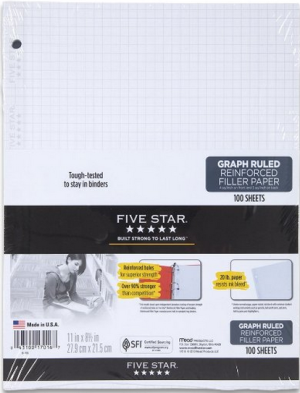 Graph Paper Maps
Graph Paper Maps
This solution is super simple. The first step is to get your hands on some graph paper like the kind shown to the left. Next, you have to figure out your scale. I typically try and keep the scale rather small. For instance, my maps are typically drawn where each box represents a 6in x 6in area of land. This approach keeps the map’s resolution fairly legible (you don’t want your map too small). The size you choose is up to you at the end of the day.
Now you simply walk your land and measure distances. Draw lines as you go to represent areas of interest. For the most part, these areas will be sketched by straight lines.
You can measure distance in a variety of ways. I like things to be as accurate as possible since I’m an engineer by trade. I use tape measures or survey measuring wheels like this one. But you can also estimate the measurements by measuring your stride (most people have a roughly 3ft stride) and counting strides as you walk.
This approach is very basic to drawing a map. It will work quite easily for you. The next method is also simple.
Google Earth Method
Not interested in drawing and measuring? No problem. Load up Google Earth on your computer and you’ll be all set.
All you have to do is search for your address and then cut and paste the view into the photo editing software of your choice (I use Paint.NET). A little bit of trimming and you’ve got a great aerial view map of your property.
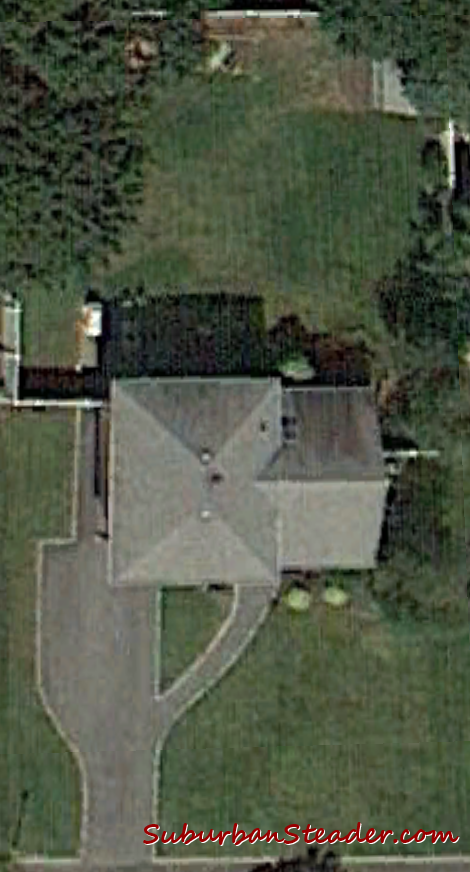
There is one problem with this solution. The tree canopy may obscure the view of the land if the satellite imagery was taken during spring/summer. Other than that one small problem, this approach allows you to quickly and accurately get a map of your suburban homestead.
How We Map Our Land
I’m a fan of letting technology do the work for me, so I used the Google Earth approach as you can see above. You can see that the view is very simple, but concise. The picture above is also a good example of how the tree canopy can obscure the view of some areas. I’m OK with this view, however, because the northwest corner of my land will not be used for much suburban homesteading activity and that is where I have the biggest problem with tree canopy obscuring my view.
Sunlight
The second part of your suburban homestead site survey is determining sun and shade profiles. Sun and shade are important for different reasons. Your garden wants as much sun as possible year round. Your chicken coop, on the other hand, may want shade in the summer and sun in the winter.
You have a few options on figuring out the sun and shade scenarios on your property.
The first option is pretty simple. Remember that map you made above? Make a handful of copies and be prepared to sketch a little. Got outside at regular intervals (I would recommend morning, noon and night at the beginning of every month) and sketch the shade profile on your land. You’ll quickly see how the shade moves across your land during the day and also how time of year changes this profile.
The second option involves a bit more technology. You can use a combination of Google Earth and SketchUp to model your land and key shade producing structure. A sample of this approach is shown below.
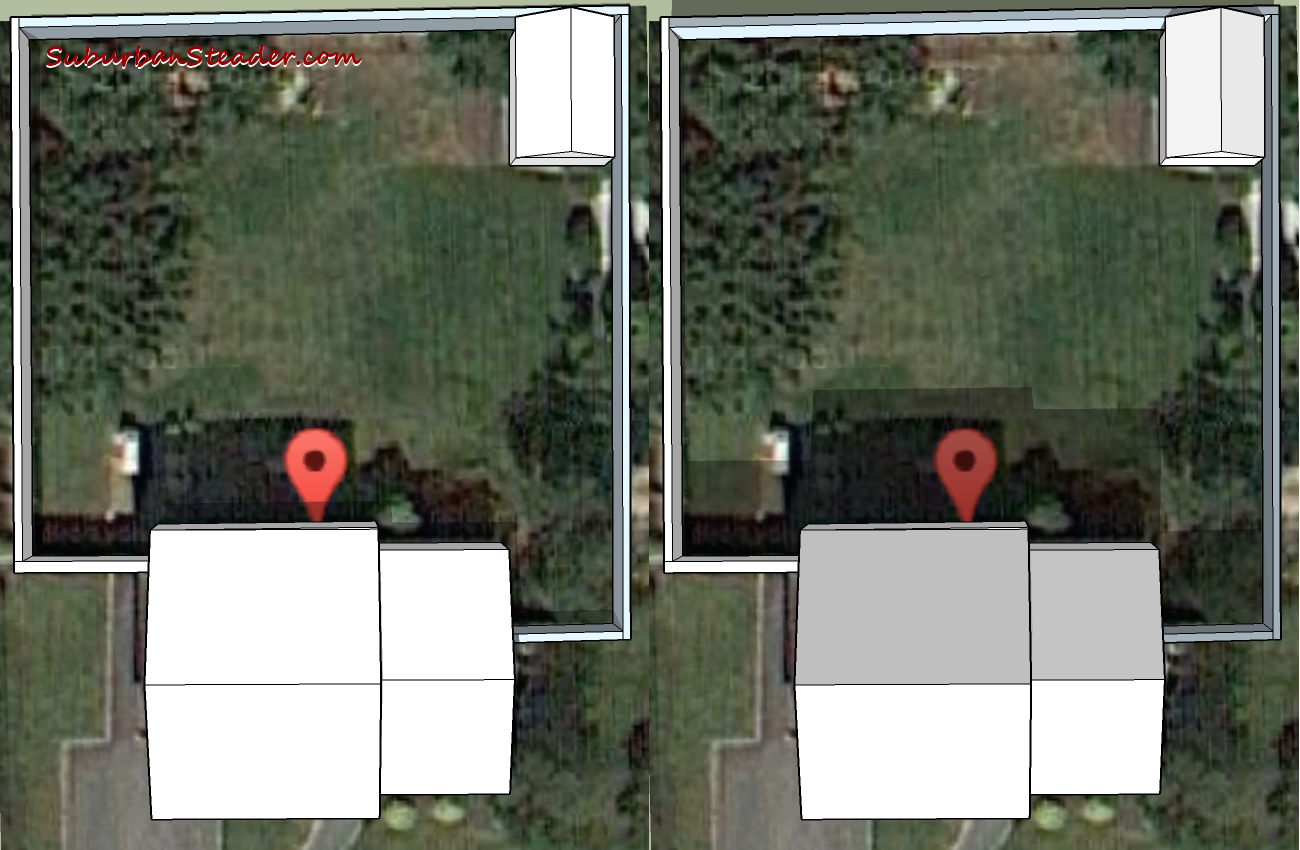
Left: Summer Solstice || Right: Winter Solstice
The geek in me enjoys this approach, but the process is beyond the scope of this post. Check out this article to see how I did it.
Sun and Shade On Our Land
The picture above gives you a good idea of what we are looking at on both the summer and winter solstice. You can see we have a big tree canopy as well that provides shade to the yard during the day. We’ve determine planting areas on the land based on shade profile. More on that later.
Soil Quality
Next to sun, soil is the most important factor in your suburban homestead site survey. This step is as simple or as intricate as you want to make it.
Here’s what I recommend – take it simple.
Walk your land and take note of what’s going on. Is the area lush with growth? Does it have hard compacted soil where nothing is growing? Is it soggy? Dry?
Now take a spade and dig up some soil in a few random spots. Ideally, you want to find areas with dark, moist (not saturated) soil which indicates fertile land. The presence of earth worms is a great find! Harder to dig areas may mean a presence of clay. Likewise, rocky and/or sandy areas may drain water too quickly.
Understanding your soil gives you an idea of what you may want to grow in certain areas. This information, combined with the shade profile exercise above, will help you determine what you’ll be planting where.
Our Soil Quality
The Suburban Steader Homestead has some unique areas (as do all pieces of land). As you probably know, we’re located on Long Island which is basically a B-I-G sandbar. That means we have some fairly sandy soil. Our house was built in the mid-1950’s and, as luck would have it, the original owners were gardeners. They manipulated the soil over the years in such a way that we have fairly fertile land.
Our lawn is probably the sandiest of the spots, but it still grows grass quite well. The big upshot to the land is the sides of the landscape where flower, and now vegetable and fruit, beds reside. Years and years of wood mulch have created a very fertile soil in these areas which allows us to plant with relative ease.
Nodes and Paths
No suburban homestead site survey is complete without understanding the most and least travelled areas on the land. Humans, and our pets, tend to take the path of least resistance when travelling from point to point. This information is important because there is no sense in planting a garden bed right in the middle of the path from the back door to the shed.
To understand your nodes and path in your suburban homestead site survey, take a copy of the map and draw a circle (or node) in any areas that receives a lot of attention from members of your family (human and pet). Doors, sheds, garage, garden beds, etc are all key points of interest. Next, draw a line between these nodes. These lines represent the paths that are most likely taken on your property.
The results of this activity give you an idea of where you may want to put in mulched or stone pathways. You also will want to consider planting high maintenance items near the paths. Likewise, areas that you don’t want Rufus to run over daily – your garden bed for instance – should be kept away from the paths.
Our Paths and Nodes
You can see from the image below that we have a few main areas that we are constantly trekking to and from. The three planting areas, the shed and compost pile are all heavily trafficked areas. Fortunately, the lawn is right in the middle of all these things, so we don’t have to worry about important areas being trampled.
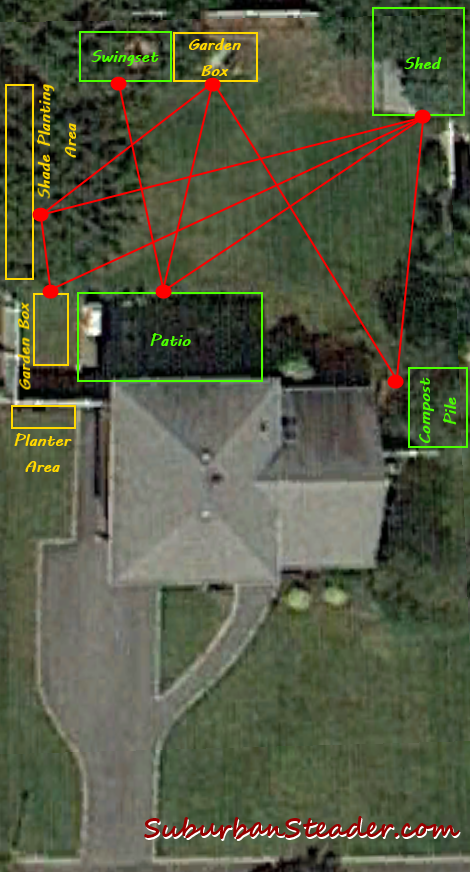
Map Your Community
This article is about doing a suburban homesteading site survey. Why would you want to map your community?
One word – RESOURCES
Going onto Google Maps and printing out a map showing the couple of miles around your land will be chock full of information. Some of the things you’ll find are:
- Residential areas – great for finding bagged leaves to mulch your garden
- Coffee Shops – those old grounds are terrific for compost
- Stables – horse manure anyone?
- Stores – might have out of date newspapers for worm bin bedding
All kinds of recon information can be acquired by this super quick, easy and inexpensive activity.
Our Community
Being that we are suburban homesteaders, we have a lot of ‘action’ local to us – many of which are referenced in the list above. I’ll be contacting many of these places in the near future to see if I can acquire homesteading materials for free or cheap.
Wrap-Up
That’s it – all you need to do to perform a suburban homestead site survey. It is not a trivial amount of work and yes, it is a LOT of maps. The good news is that, if you made it through all these steps, you should really be cranking with ideas on how to better set up your land to serve your suburban homesteading needs.
Please let us know any tips you have for performing a suburban homestead site survey in the comments or on our Facebook Page.
